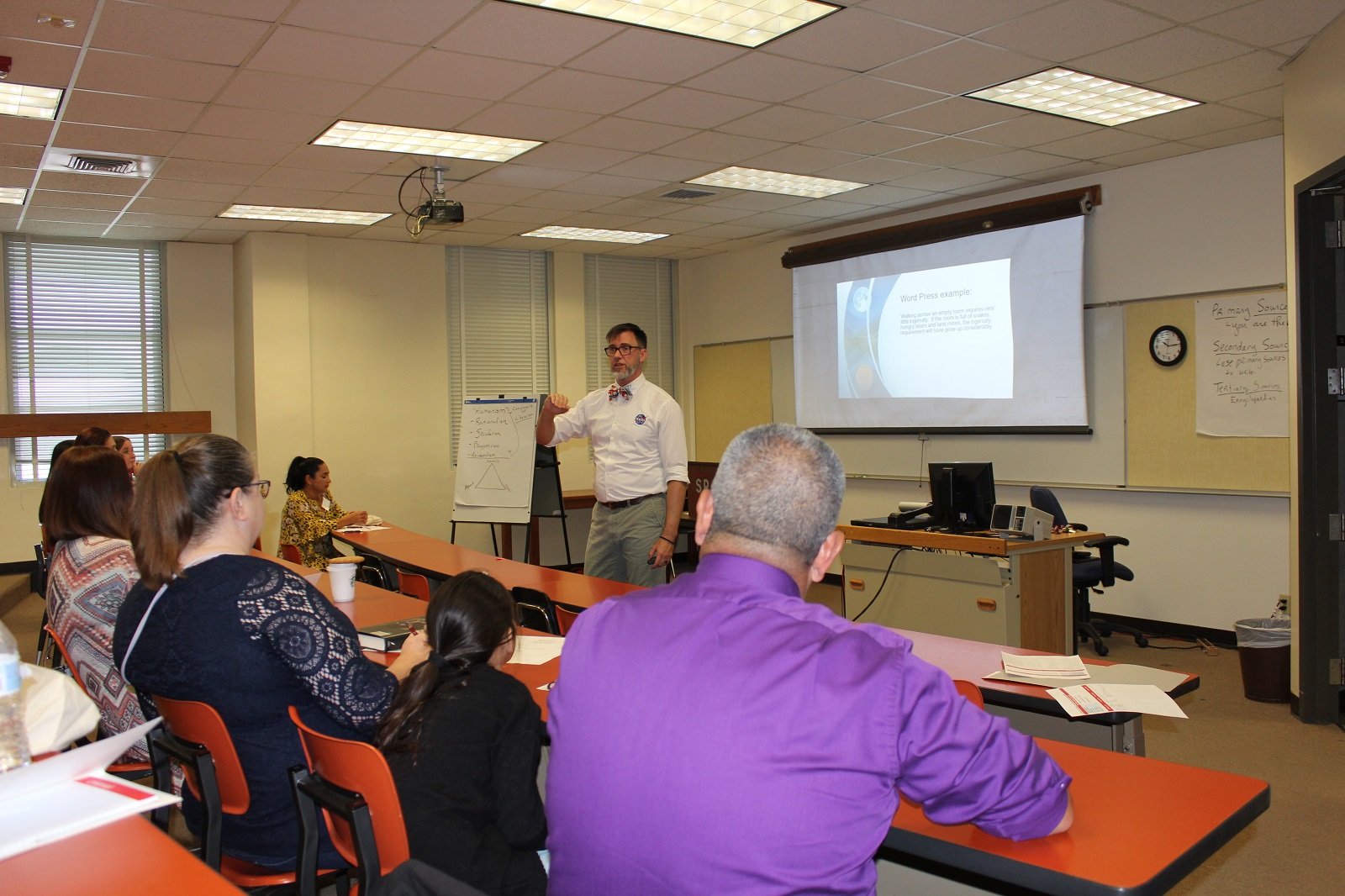
by Travis Hendryx, Office of Public Relations
More than 30 educators from across the region were in attendance for the Science of Literacy and Learning conference on Monday, August 5.
The event is in its second year and is facilitated by the Sul Ross Department of Education.
The purpose of the conference is to provide educational leaders, K-12 teachers, undergraduate and graduate students and faculty the opportunity to explore how the science of memory and learning impacts instructional and curriculum design and improves student learning outcomes.
This year the conference focused on literacy with participants engaging in learning experiences focused on the following learning strands:
- Literacy and the Diverse Learner
- Pedagogy and Assessment
- Program Design and Evaluation
- Professional Preparation and Learning
- Community Partnerships
“One of our goals is to provide a setting of collaboration between school districts in West Texas,” said Dr. Jennifer Miller-Ray, Coordinator of the Educational Reading Specialist Program.
“This conference gives us the opportunity to share the best practices and strategies to help our diverse learner population in engaging their own education.”
Ray said school districts from Eagle Pass, Del Rio, Alpine, Marathon and Marfa were represented at this year’s conference.
“Conferences like this in places like West Texas are extremely important,” said opening keynote speaker Steven Smith, Education Specialist at NASA.
“We so often pigeon-hole subject matter where science teachers teach science, math teachers teach math and English teachers teach English.”
Smith said that context is needed for math and science to make sense.
“Why not bring it all together?” he said. “How can you learn math or science if you can’t read?”
As an analogy, Smith added that math is a language and educators must find ways to teach students using more contextual methods.
“Too often students are taught using numbers and letters using rules to put them together and that’s it,” said Smith. “Math is also about using words but it’s also the universal language that we use to describe the universe.”
“For example, we knew that gravitational waves in relation to black holes existed for a hundred years even before we had the ability to test for them. Because it worked out mathematically. Again, with math, we are speaking the language of the universe itself.”
“So literacy and science, technology, engineering and math (STEM) go hand-in-hand,” he said.
